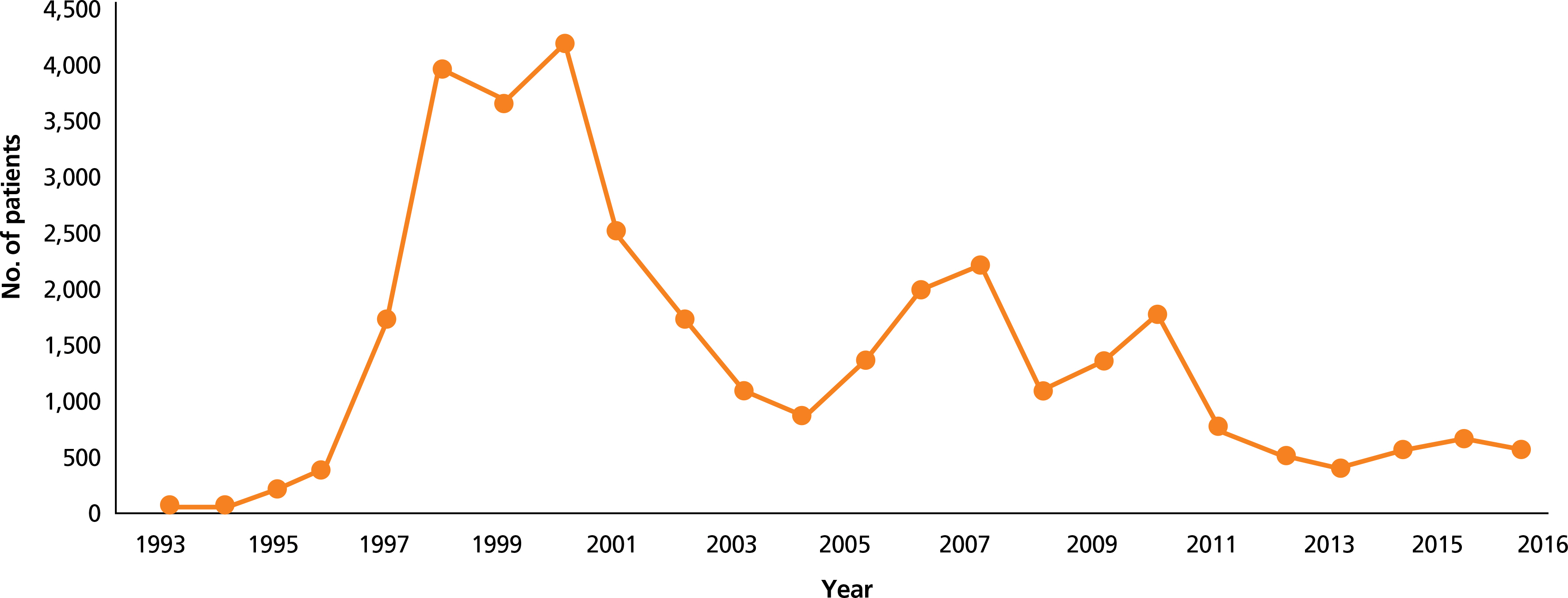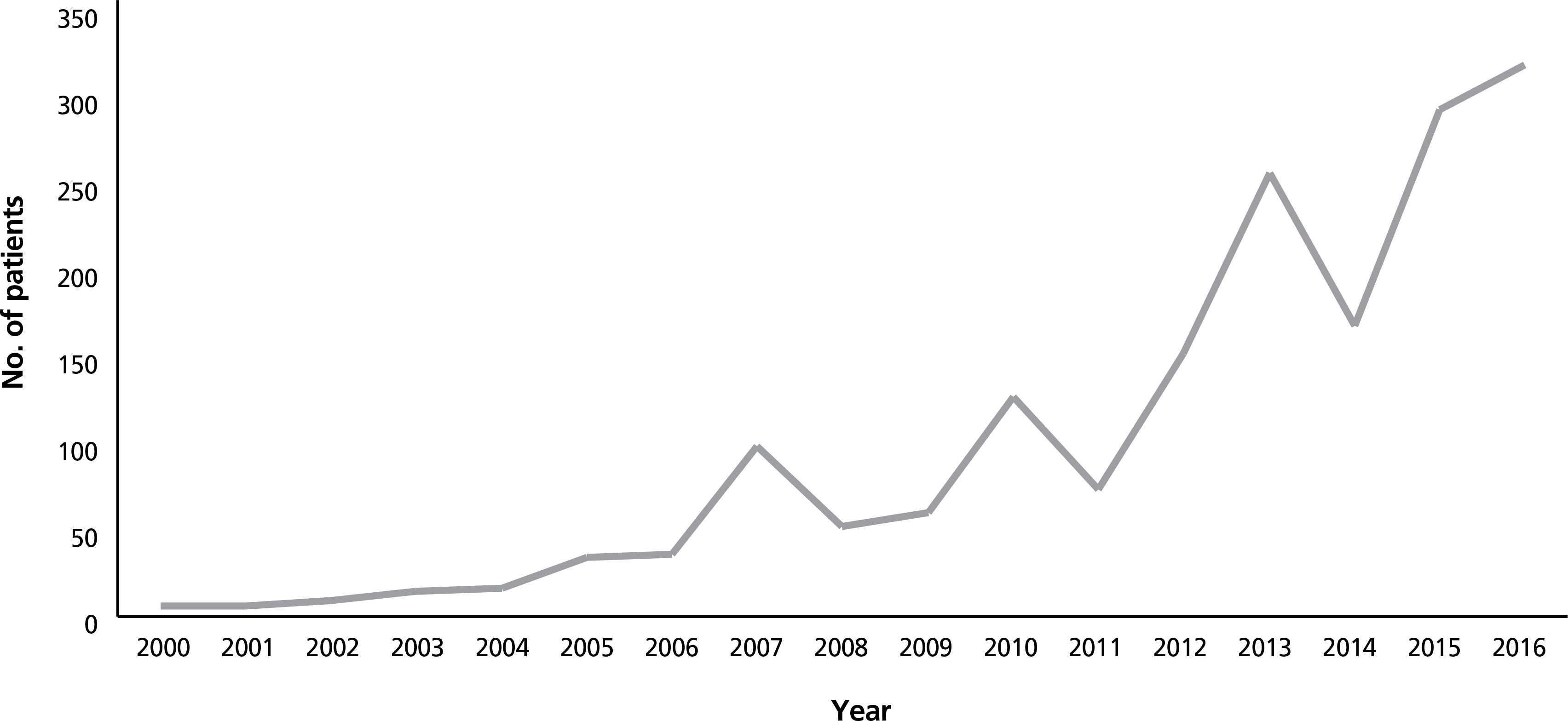J Korean Med Assoc.
2017 Jun;60(6):468-474. 10.5124/jkma.2017.60.6.468.
Current status and outlook of mosquito-borne diseases in Korea
- Affiliations
-
- 1Division of Infectious Diseases, Kangubuk Samsung Hospital, Sungkyunkwan University School of Medicine, Seoul, Korea. joonsup.yeom@gmail.com
- KMID: 2384392
- DOI: http://doi.org/10.5124/jkma.2017.60.6.468
Abstract
- The recent epidemic of Zika virus in South America caused people around the world to exhibit an increased interest in the impact of arboviral illnesses. In Korea, malaria and Japanese encephalitis are the most important mosquito-borne diseases that occur indigenously. However, with the continuously increasing number of international travelers, the incidence of imported arboviral illnesses is also increasing. Currently, dengue fever is the most common mosquito-borne disease among Korean international travelers. The number of patients with Japanese encephalitis, chikungunya fever, and Zika virus infection is also on the rise. Many countries that have disease-transmitting mosquitoes have already experienced autochthonous arboviral infections due to the introduction of viruses by travelers. Moreover, with global warming and urbanization of the areas in which mosquito-borne diseases occur, the environment is becoming more favorable for mosquito-borne diseases. This concise review describes the current status and outlook of mosquito-borne diseases in Korea.
Keyword
MeSH Terms
Figure
Cited by 1 articles
-
Vector-borne infectious diseases
Young Hwa Choi
J Korean Med Assoc. 2017;60(6):449-450. doi: 10.5124/jkma.2017.60.6.449.
Reference
-
1. Gates B. The deadliest animal in the world [Internet]. [place unknown]: The Gates Notes;2014. [cited 2017 Jun 7]. Available from:. https://www.gatesnotes.com/Health/Most-Lethal-Animal-Mosquito-Week.2. Korea Centers for Disease Control and Prevention. A guideline for malaria management, Republic of Korea. Cheongju: Korea Center for Disease Control and Prevention;2017.3. Chang KS, Yoo DH, Ju YR, Lee WG, Roh JY, Kim HC, Klein TA, Shin EH. Distribution of malaria vectors and incidence of vivax malaria at Korean army installations near the demilitarized zone, Republic of Korea. Malar J. 2016; 15:259.
Article4. Korea Centers for Disease Control and Prevention. Epidemiology and management of vaccine preventable diseases. 5th ed.Cheonju: Korea Centers for Disease Control and Prevention;2017.5. Lee HY, Park YJ, Park O. Incidence and epidemiology of Japanese encephalitis in Korea. Public Health Wkly Rep. 2015; 8:433–436.6. Back AT, Lundkvist A. Dengue viruses: an overview. Infect Ecol Epidemiol. 2013 Aug 30. [Epub].https://doi.org/10.3402/iee.v3i0.19839.7. Mangold KA, Reynolds SL. A review of dengue fever: a resur-ging tropical disease. Pediatr Emerg Care. 2013; 29:665–669.8. Succo T, Leparc-Goffart I, Ferre JB, Roiz D, Broche B, Maquart M, Noel H, Catelinois O, Entezam F, Caire D, Jour-dain F, Esteve-Moussion I, Cochet A, Paupy C, Rousseau C, Paty MC, Golliot F. Autochthonous dengue outbreak in Nimes, South of France, July to September 2015. Euro Surveill. 2016 May 26. [Epub].https://doi.org/10.2807/1560-7917.ES.2016.21.21.30240.9. Kutsuna S, Kato Y, Moi ML, Kotaki A, Ota M, Shinohara K, Kobayashi T, Yamamoto K, Fujiya Y, Mawatari M, Sato T, Kunimatsu J, Takeshita N, Hayakawa K, Kanagawa S, Takasaki T, Ohmagari N. Autochthonous dengue fever, Tokyo, Japan, 2014. Emerg Infect Dis. 2015; 21:517–520.
Article10. Quam MB, Sessions O, Kamaraj US, Rocklov J, Wilder-Smith A. Dissecting Japan's dengue outbreak in 2014. Am J Trop Med Hyg. 2016; 94:409–412.
Article11. Robinson MC. An epidemic of virus disease in Southern Province, Tanganyika Territory, in 1952-53. I. Clinical features. Trans R Soc Trop Med Hyg. 1955; 49:28–32.12. Sergon K, Njuguna C, Kalani R, Ofula V, Onyango C, Konongoi LS, Bedno S, Burke H, Dumilla AM, Konde J, Njenga MK, Sang R, Breiman RF. Seroprevalence of Chikungunya virus (CHIKV) infection on Lamu Island, Kenya, October 2004. Am J Trop Med Hyg. 2008; 78:333–337.
Article13. Powers AM, Logue CH. Changing patterns of chikungunya virus: re-emergence of a zoonotic arbovirus. J Gen Virol. 2007; 88:2363–2377.
Article14. Outbreak news. Chikungunya and dengue, south-west Indian Ocean. Wkly Epidemiol Rec. 2006; 81:106–108.15. Horwood PF, Reimer LJ, Dagina R, Susapu M, Bande G, Katusele M, Koimbu G, Jimmy S, Ropa B, Siba PM, Pavlin BI. Outbreak of chikungunya virus infection, Vanimo, Papua New Guinea. Emerg Infect Dis. 2013; 19:1535–1538.
Article16. Roth A, Hoy D, Horwood PF, Ropa B, Hancock T, Guillaumot L, Rickart K, Frison P, Pavlin B, Souares Y. Preparedness for threat of chikungunya in the pacific. Emerg Infect Dis. 2014; 20:e130696.
Article17. van Genderen FT, Krishnadath I, Sno R, Grunberg MG, Zijlmans W, Adhin MR. First Chikungunya outbreak in Suriname: clinical and epidemiological features. PLoS Negl Trop Dis. 2016; 10:e0004625.
Article18. Roiz D, Bousses P, Simard F, Paupy C, Fontenille D. Autochthonous chikungunya transmission and extreme climate events in Southern France. PLoS Negl Trop Dis. 2015; 9:e0003854.
Article19. Korea Centers for Disease Control and Prevention. Epidemiologic investigation of West Nile fever. Public Health Wkly Rep. 2010; 3:160–161.20. Hwang J, Ryu HS, Kim H, Lee SA. The first reported case of West Nile encephalitis in Korea. J Korean Med Sci. 2015; 30:343–345.
Article21. Kim CY, Oh H, Song J, Hur M, Suh JH, Jheong WH, Kim JT, Oh HS, Park JH. First detection of West Nile virus in domestic pigeon in Korea. J Vet Sci. 2016; 17:587–589.22. Yeh JY, Park JY, Ostlund EN. Serologic evidence of West Nile virus in wild ducks captured in major inland resting sites for migratory waterfowl in South Korea. Vet Microbiol. 2011; 154:96–103.
Article23. Yoon HJ. Advanced understandings for Zika virus. J Korean Med Assoc. 2016; 59:443–451.
Article24. Korea Centers for Disease Control and Prevention. Zika cases in the Republic of Kora. Public Health Wkly Rep. 2017; 10:260–264.
- Full Text Links
- Actions
-
Cited
- CITED
-
- Close
- Share
- Similar articles
-
- Food-Borne Parasitic Diseases
- Current Situation and Elimination Plan of Water-borne Infectious Diseases
- The Most Common Mite- and Tick-borne Infectious Diseases in Korea: Scrub Typhus and Severe Fever Thrombocytopenia Syndrome
- Present state and future of tick-borne infectious diseases in Korea
- Current Status and Infection Control of Severe Fever with Thrombocytopenia Syndrome in Korea




